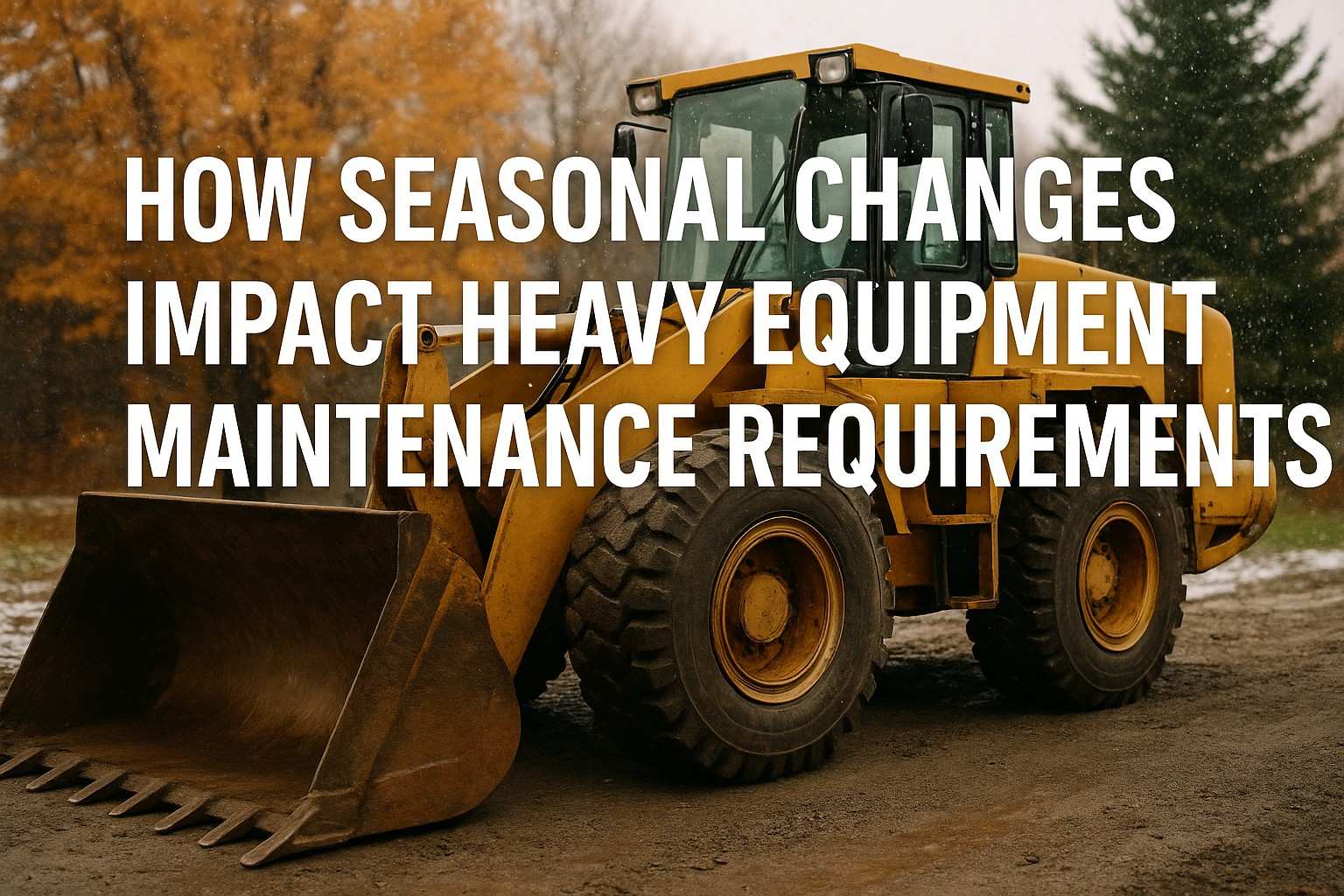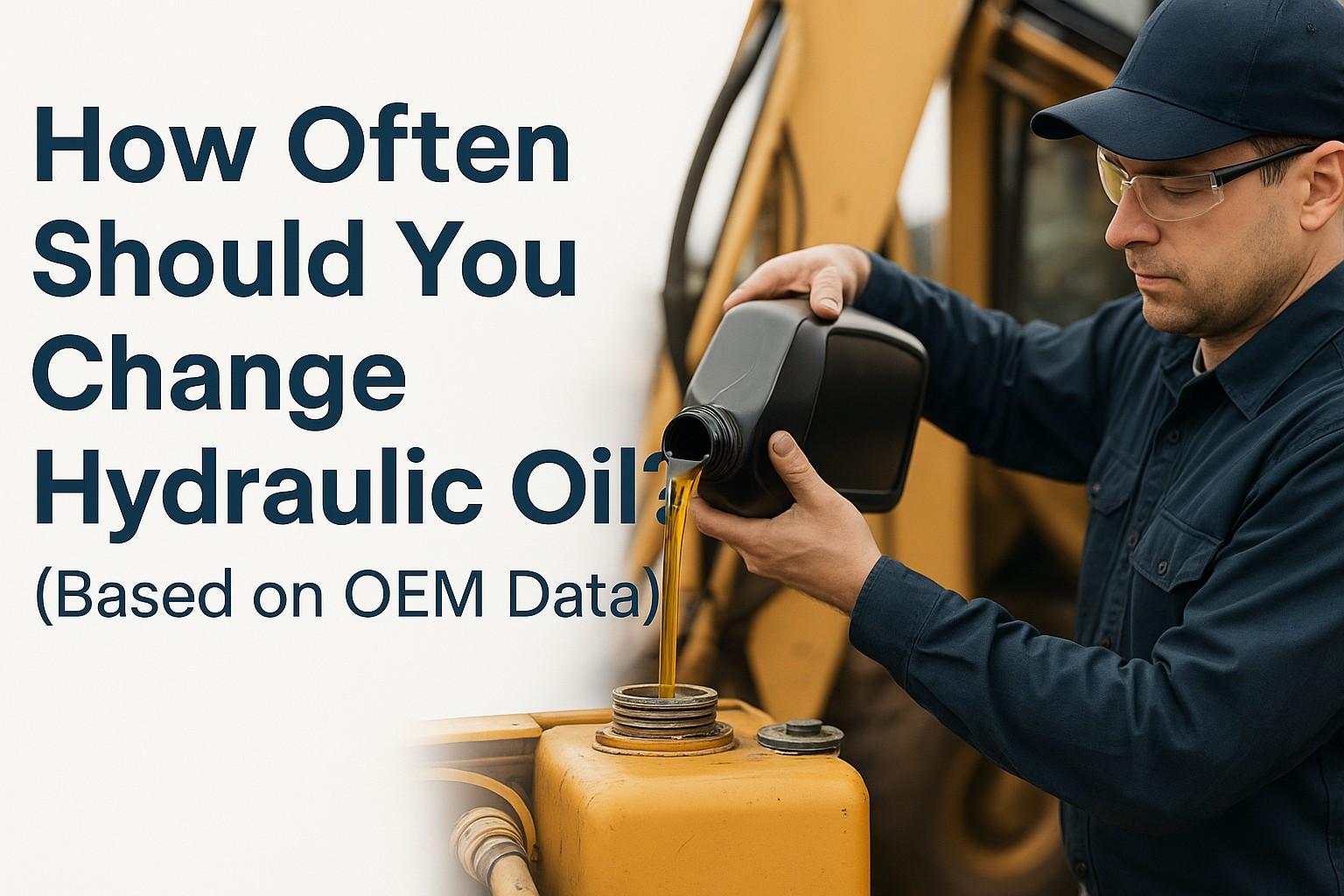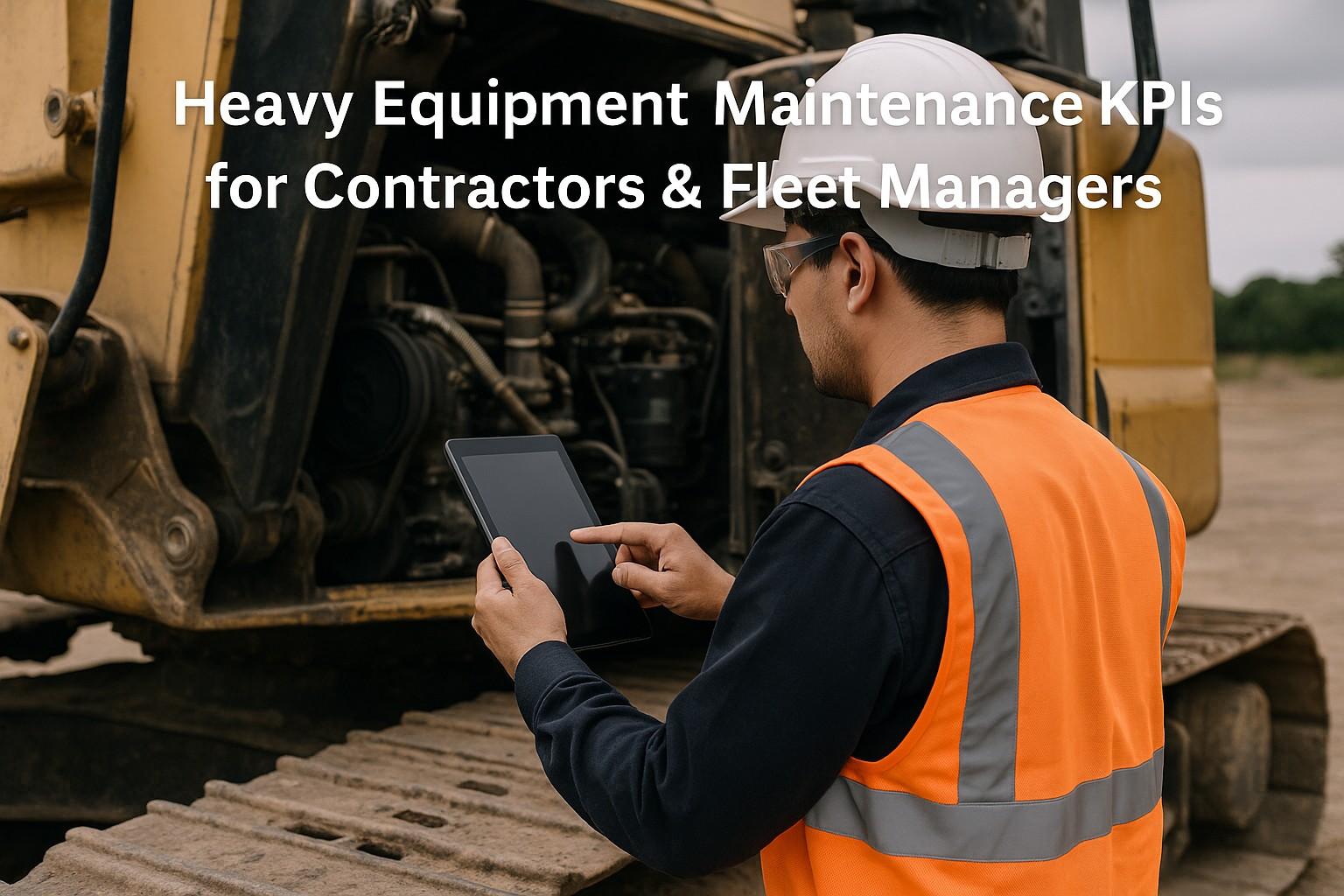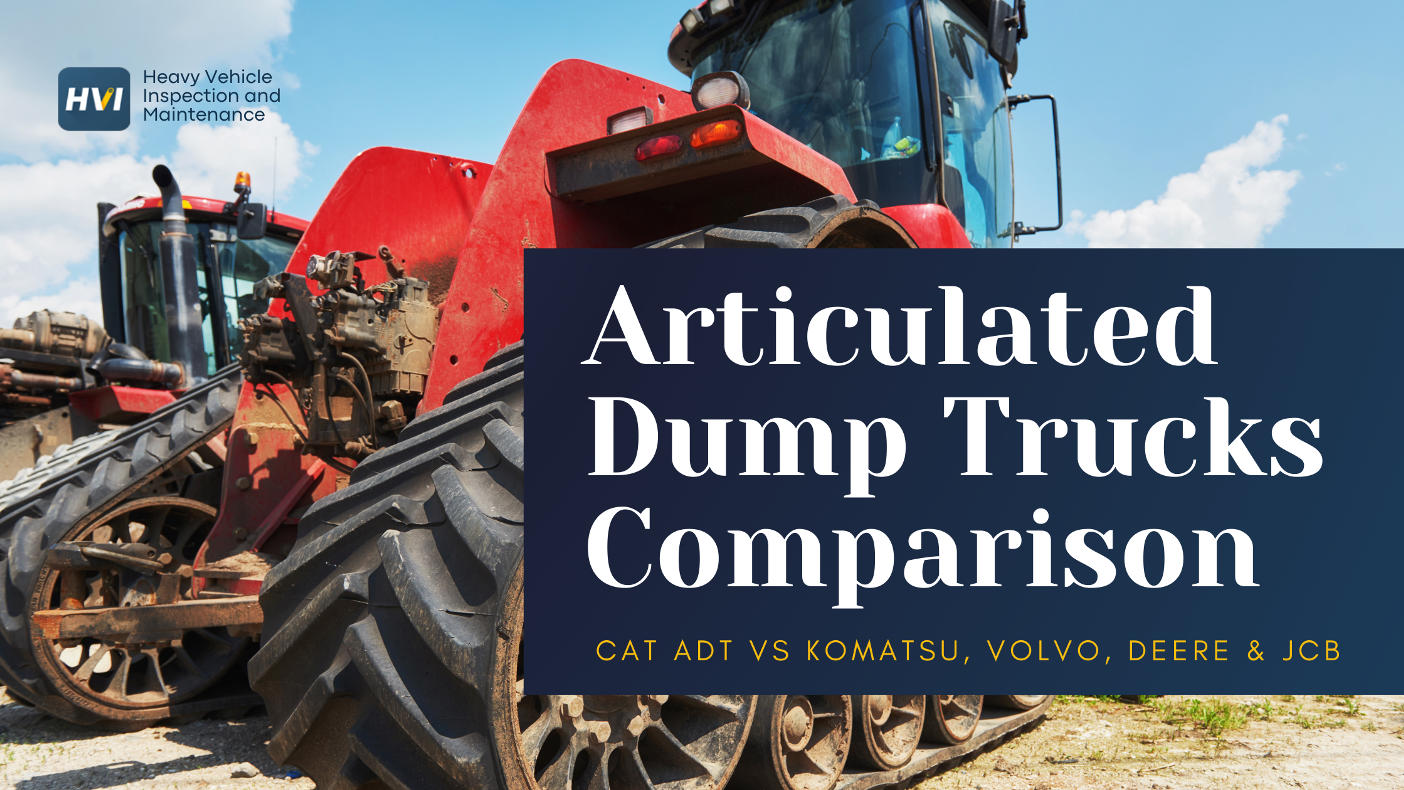Experience Modification Rate (EMR) is a crucial metric that affects construction companies' insurance costs and bid eligibility. This comprehensive guide explains how EMR is calculated, why it matters for your bottom line, and how HVI's heavy vehicle inspection solutions can significantly reduce your EMR—leading to substantial premium savings and improved competitive positioning in the construction industry. Learn how to reduce your EMR through better vehicle safety.
Understanding EMR and Its Direct Impact on Construction Business
In the construction industry, the Experience Modification Rate (EMR) serves as a critical numerical expression that gauges a company's workers' compensation claims history and safety record relative to others in the same industry. Companies implementing comprehensive heavy vehicle inspection programs often see significant improvements in their EMR, as equipment-related incidents account for a substantial portion of workplace injuries. At HVI (Heavy Vehicle Inspection), we've observed that construction businesses with systematic inspection protocols typically achieve EMR ratings 15-20% below industry averages.
An EMR of 1.0 is considered the industry average benchmark. When your company achieves an EMR below 1.0, it demonstrates a better-than-average safety performance compared to similar businesses. Conversely, an EMR above 1.0 indicates higher risk and worse-than-average safety practices. Track your safety metrics digitally to improve your EMR.
"The difference between an EMR of 0.8 and 1.2 can mean tens of thousands of dollars in insurance costs annually for a mid-sized construction company," explains John Martinelli, safety director at Northwest Construction. "Implementing structured heavy vehicle inspection and maintenance protocols has been the single most effective strategy for lowering our EMR over the past three years."
How EMR is Calculated: The NCCI Formula
The National Council on Compensation Insurance (NCCI) calculates EMR using a complex formula that considers several factors:
- Payroll volume across different job classifications
- Three years of workers' compensation claims data (excluding the most recent year)
- Comparison against expected losses for similar businesses
- Both claim frequency and claim severity
- Company size and applicable class rates
The formula weighs frequency of incidents more heavily than severity, meaning that multiple small claims can damage your EMR more than a single large claim. This approach encourages consistent safety practices rather than just preventing major accidents.
EMR Calculation Example
EMR Calculation Example
| Element | Details | Impact on EMR |
|---|---|---|
| Base Premium | $100,000 | Starting point |
| Excellent EMR (0.65) | $100,000 x 0.65 | $65,000 final premium |
| Average EMR (1.0) | $100,000 x 1.0 | $100,000 final premium |
| Poor EMR (1.5) | $100,000 x 1.5 | $150,000 final premium |
As demonstrated, the difference between excellent and poor safety performance can result in an $85,000 swing in premium costs—enough to significantly impact your profitability and bid competitiveness. Calculate your potential savings.
Why EMR Matters: Beyond Insurance Premiums
The importance of your EMR extends far beyond just insurance cost reduction:
Financial Implications
- Directly affects workers' compensation insurance premiums
- Influences eligibility for insurance captive programs
- Can determine qualification for certain bonds and coverage types
Competitive Advantage
- Many project owners and general contractors set maximum EMR thresholds (often 1.0) for bidders
- Public projects frequently require disclosure of EMR ratings
- Serves as a third-party validation of your safety commitment
- Creates a strong selling point in a tight labor market
Regulatory Considerations
- Reduces likelihood of OSHA inspections and scrutiny
- Demonstrates commitment to regulatory compliance
- Provides documentation for safety certification programs
"Companies with EMRs below 0.85 win approximately 25% more contracts when bidding against competitors with similar pricing," notes a recent Construction Management Association report. "Our analysis found that heavy vehicle inspection programs were implemented by over 87% of these low-EMR achievers."
Safety Manager Insight: Equipment-related incidents account for 31% of reportable construction incidents. A proactive vehicle inspection program can reduce these incidents by 42% within the first year.
Learn about vehicle safety programs →The Vehicle Connection: How Heavy Equipment Impacts Your EMR
In construction operations, heavy vehicles and equipment represent significant risk management challenges that directly affect your EMR. Our data shows that approximately 31% of all reportable construction incidents involve mobile equipment or vehicles. HVI's comprehensive inspection solutions have helped reduce these incidents by an average of 42% within the first year of implementation.
Critical Vehicle-Related EMR Factors:
- Equipment operator certification and training documentation
- Pre-use inspections of heavy machinery
- Preventive maintenance programs and documentation
- Near-miss reporting specific to vehicle operations
- Jobsite traffic management planning and implementation
Our comprehensive inspection protocols have helped companies identify potential issues before they become workplace injuries. This proactive approach directly impacts your EMR calculation by reducing both the frequency and severity of claims. Clients using our heavy vehicle inspection and maintenance platform report an average 0.17 reduction in EMR within the first renewal cycle. Start improving your EMR today.
Best Practices: How Leading Companies Maintain Low EMRs
1. Implement Systematic Safety Inspections
Successful construction companies implement rigorous safety inspection programs that go beyond mere compliance. These programs include:
- Daily equipment safety checklists that operators complete before use
- Weekly site-wide safety audits conducted by supervisors
- Monthly comprehensive risk assessments by safety personnel
- Quarterly third-party evaluations of safety culture
"Since implementing HVI's heavy vehicle inspection platform across our 87-vehicle fleet, our recordable incidents have decreased by 68%," reports Maria Sanchez, Fleet Safety Manager at Eastern Builders. "The standardized digital format ensures nothing gets missed."
2. Leverage Technology for Documentation
Modern safety management software solutions transform how companies track and analyze safety data:
- Mobile applications for real-time safety reporting
- Cloud-based storage of all safety documentation
- Automated tracking of compliance requirements
- Instant notification systems for safety incidents
Our mobile inspection application iOS | Android ensures that all documentation is properly completed, stored, and accessible for insurance audits or OSHA compliance reviews.
3. Conduct Focused Toolbox Talks
Regular toolbox talks remain one of the most effective methods for reinforcing safety:
- Keep sessions brief (10-15 minutes) and focused on a single topic
- Use recent near misses or industry incidents as teaching moments
- Document attendance and topics covered
- Solicit feedback from workers about potential hazards
"Companies that conduct weekly toolbox talks experience 27% fewer recordable incidents than those conducting monthly sessions," according to Construction Safety Research Institute data. "Including heavy vehicle inspection and maintenance topics in at least monthly toolbox talks correlates with even greater reductions."
Reduce Your EMR Through Better Safety
Digital vehicle inspection programs deliver measurable EMR improvements within the first year.
Case Study: Reducing EMR Through Systematic Vehicle Inspections
Davidson Construction, a mid-sized commercial construction company, faced an EMR of 1.28 after several vehicle-related incidents. Their insurance costs had increased by 37% over two years, and they were becoming ineligible for certain projects.
The Implementation Strategy:
- Deployed HVI's digital inspection system for all heavy equipment
- Established daily pre-use inspections with mandatory documentation
- Created comprehensive Jobsite Hazard Assessments (JHAs) for all equipment operations
- Implemented a structured near-miss reporting program
- Used real-time safety data to identify trends and problem areas
The Results:
- EMR decreased from 1.28 to 0.91 within two years
- Workers' compensation premiums reduced by $127,000 annually
- OSHA recordable incidents decreased by 64%
- Successfully qualified for previously inaccessible projects
- Improved worker retention and recruitment
"The ROI on implementing heavy vehicle inspection protocols through HVI was almost immediate," states Robert Davidson, CEO. "We've exceeded our three-year savings projection within the first 18 months."
Practical Implementation: Your EMR Improvement Roadmap
Step 1: Assess Your Current Status
- Obtain your current EMR worksheet from your insurance carrier
- Analyze which claims and incidents are impacting your rate
- Identify patterns in frequency, types, and costs of claims
- Benchmark against industry averages for your specific work types
Step 2: Build Your Safety Infrastructure
- Develop comprehensive equipment-specific checklists
- Establish clear documentation systems for all safety activities
- Create a structured incident reporting process
- Implement strategic training programs targeted at problem areas
Step 3: Focus on Heavy Equipment Safety
- Require documented inspections before each use
- Standardize inspection protocols across all equipment types
- Leverage technology for real-time reporting and documentation
- Create equipment-specific safety programs and training
"After implementing HVI's heavy vehicle inspection and maintenance platform, we saw immediate improvements in operator behavior and mechanical issue identification," notes Sarah Johnson, Safety Director at Western Contractors. "The system paid for itself within the first quarter through prevented downtime alone."
Step 4: Monitor and Adjust
- Track leading indicators that predict future EMR impacts
- Conduct regular analysis of safety performance metrics
- Adjust programs based on observed trends
- Celebrate improvements and recognize safe practices
The Bottom Line: EMR as a Business Investment
Viewing your EMR as a business investment rather than just a compliance requirement can transform your approach to safety. Every dollar invested in robust safety programs—particularly those focused on heavy equipment—yields an average return of $4-6 in reduced insurance costs, improved productivity, and enhanced bidding opportunities.
Companies with EMRs below 0.85 experience:
- 23% lower employee turnover
- 15% higher productivity rates
- 34% fewer days lost to injury
- Significantly higher success rates in competitive bidding
Transform Your EMR Through Heavy Vehicle Inspection
Your company's EMR is not just a number assigned by insurance companies—it's a reflection of your commitment to safety and a significant factor in your overall business success.
Companies that implement HVI's comprehensive inspection solutions typically see:
- • 0.15-0.25 EMR reductions within two renewal cycles
- • 30-45% fewer equipment-related incidents
- • $75,000-$180,000 annual insurance premium savings for mid-sized fleets
- • Significant improvements in bid qualification success rates
Ready to transform your safety program and dramatically reduce your EMR?
Join the hundreds of construction companies that have already revolutionized their safety programs and EMR ratings with HVI's solutions.
This article is part of our comprehensive guide to construction safety and risk management. For more information on specific inspection requirements, visit our Safety Compliance Guide or explore our Client Success Stories.
Frequently Asked Questions About EMR in Construction
What is considered a good EMR rating for construction companies?
A good EMR rating is below 1.0, with most successful construction companies aiming for 0.70 to 0.90. An EMR of 1.0 represents the industry average. The lower your EMR, the better your safety record appears to insurance companies and potential clients.
Excellent companies often achieve EMRs between 0.50-0.75, while EMRs above 1.25 can significantly impact your ability to win bids and may result in much higher insurance premiums.
How do heavy vehicle inspections affect my EMR?
Heavy vehicle inspections directly impact EMR by preventing equipment-related incidents, which account for approximately 31% of construction workplace injuries.
Regular vehicle inspections help by:
- Identifying mechanical issues before they cause accidents
- Ensuring proper safety equipment functionality
- Creating documentation that demonstrates proactive safety management
- Reducing both frequency and severity of workers' compensation claims
How long does it take to improve my EMR after implementing safety changes?
EMR improvements typically take 1-3 years to fully reflect in your rating. EMR calculations use three years of claims data (excluding the most recent year), so changes in safety practices have a delayed but cumulative effect.
However, insurance companies may offer other incentives for immediate safety improvements, and you'll see the full impact as older, higher-claim years drop out of the calculation period.
Can my EMR disqualify me from bidding on projects?
Yes, many projects set maximum EMR requirements for bidders. Government contracts and large commercial projects often require EMRs below 1.0, with some requiring 0.85 or lower.
Project owners use EMR as a pre-qualification metric because it provides third-party validation of your safety performance and indicates the likelihood of future incidents on their projects.
What impacts EMR calculation the most: frequency or severity of claims?
Frequency of claims impacts EMR more than severity. The NCCI formula weighs the number of incidents more heavily than their cost, meaning multiple small claims can damage your EMR more than one large claim.
This is why consistent daily safety practices and preventing minor incidents through regular inspections is often more effective than focusing solely on major accident prevention.
How much can a poor EMR increase my insurance costs?
Insurance costs increase proportionally to your EMR. For example, if your base premium is $100,000:
- EMR 0.65: $65,000 final premium (35% savings)
- EMR 1.0: $100,000 final premium (baseline)
- EMR 1.5: $150,000 final premium (50% increase)
The difference between excellent and poor EMR can result in tens of thousands of dollars in additional insurance costs annually. Calculate your potential savings.
Do small construction companies need to worry about EMR?
Yes, even small companies should monitor EMR. While some states have minimum premium thresholds before EMR applies, most construction companies reach these thresholds quickly due to the high-risk nature of the industry.
Small companies often see more dramatic EMR swings from single incidents, making proactive safety management even more critical for maintaining competitive insurance rates.
What's the fastest way to start improving my EMR?
The fastest EMR improvement strategies focus on preventing frequent, smaller incidents:
- Implement daily pre-use equipment inspections
- Establish digital documentation systems for all safety activities
- Create structured near-miss reporting programs
- Conduct weekly toolbox talks focused on equipment safety
- Use technology platforms for real-time safety monitoring
Companies implementing comprehensive vehicle inspection programs often see measurable improvements within the first year. Start your EMR improvement program today.
How is EMR different from OSHA incident rates?
EMR focuses on workers' compensation costs while OSHA rates track recordable incidents. EMR considers both frequency and cost of claims, while OSHA rates primarily track incident frequency relative to hours worked.
Both metrics are important, but EMR directly affects your insurance premiums and bidding eligibility, making it a critical business metric beyond just safety compliance.
Can I improve my EMR with better safety documentation alone?
Documentation alone won't improve EMR - you need actual reduction in incidents and claims. However, proper documentation is crucial for:
- Demonstrating proactive safety management to insurers
- Identifying trends before they become costly claims
- Supporting insurance audits and renewals
- Meeting client and regulatory requirements
The key is using documentation systems that help prevent incidents, not just record them. Learn how digital inspection platforms can transform your safety documentation into actionable incident prevention.
Start Reducing Your EMR Today
Join hundreds of construction companies saving thousands on insurance through better vehicle safety.




